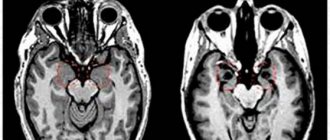Key Concepts
Perception is usually understood as both the process itself and the totality of psychophysiological phenomena. In philosophy, perception was interpreted as a type of cognition, different from sensation and thinking. D. Leibniz described perception as a state of unclear consciousness; it gradually comes under the influence of attention (apperception), when the object is clearly and meaningfully realized. Perception in psychology is a form of sensory cognition.
Perception is a holistic reflection of objects or phenomena in conditions of their direct impact on the senses. The mental process is that objects and phenomena at a given moment in time are reflected through the senses. As a result, when a person interacts with the outside world, an image of an object or phenomenon is formed.
The image is based on sensations. But the perceived image is not a sum of sensations, but a holistic and meaningful picture. For example, noise outside the window will be perceived as a sound sensation of a certain frequency, identified from personal experience (the noise of rain, leaves, broken glass, a passing car).
Perception is closely related to human activity, so movement is an important component. There are motor processes:
- With the eyes - inspection of an object.
- Hands - feeling the object.
- Reactions that cause the head to turn towards the sound.
Apperception refers to the dependence of perception on past experience, knowledge base and personality orientation. Directions will depend on the person’s life experience and professional activities. Thus, a football player, a doctor and a businessman will perceive the ball differently depending on the direction of their professional activity.
Perception of a person by a person and mutual understanding in communication
The idea of another person is closely related to the level of one’s own self-awareness. Mutual understanding between communication partners presupposes that each of them knows the psychology of the other person: his values and motives of behavior, level of aspirations and character traits.
The idea of another person is closely related to the level of one’s own self-awareness. Analysis of self-awareness through another person is carried out using two concepts: identification and reflection.
Identification is one of the mechanisms of cognition and understanding of another person, which most often consists of unconsciously likening oneself to a significant other. Here, a significant other is a person who is an authority for a given subject of communication and activity. This usually happens when, in real interaction situations, an individual attempts to put himself in the place of a communication partner. During identification, a certain emotional connection is established with the object.
It is necessary to distinguish between the concepts of “ identification ” and “ reference ”. If for the first concept the basis is the process of assimilation of the subject to a communication partner, i.e. assimilation to a significant other, then for the second concept (“reference”) the main thing is the subject’s dependence on other people, acting as a selective attitude towards them.
The object of reference relations can be either a group of which the subject is a member, or another group with which he relates himself without being a real participant. The function of a reference object can also be performed by an individual person, including one who does not really exist (a literary hero, a fictional ideal to follow, etc.) In both cases, the subject borrows for himself goals, values, ideas, norms and rules of behavior object of reference (group, individual.
The concept of “ identification ” is close in content to the concept of “ empathy ”.
Empathy is the understanding of another person's emotional states in the form of empathy. The mechanism of empathy is to a certain extent similar to the mechanism of identification. This similarity lies in the ability to put oneself in the place of another, to look at things from his point of view. However, this does not necessarily mean identifying with that other person (as identification does). Simply, with empathy, the partner’s line of behavior is taken into account, the subject treats him with sympathy, but interpersonal relationships with him are built based on the strategy of his line of behavior.
Reflection is the individual’s awareness of how he is perceived by his communication partner, that is, how his communication partner will understand me. During interaction, certain characteristics of each other are mutually assessed and changed.
Interpersonal perception and its effects
Causal attribution
Getting to know each other, people do not limit themselves to obtaining information through observation. They strive to find out the reasons for the behavior of communication partners and clarify their personal qualities. But since information about a person obtained as a result of observation is most often insufficient for reliable conclusions, the observer begins to attribute probabilistic causes of behavior and characterological personality traits to the communication partner. This causal interpretation of the behavior of the observed individual can significantly influence the observer himself.
Also on the blog: “Innocent actions” of parents that can poison the lives of their children.
Thus, causal attribution is the subject’s interpretation of the interpersonal perception of the causes and motives of other people’s behavior. The word "causal" means "caused". Attribution is the attribution of characteristics to social objects that are not represented in the field of perception.
Based on a study of problems associated with causal attribution, researchers have concluded that attributional processes constitute the main content of interpersonal perception. It is significant that some people tend to fixate physical traits to a greater extent in the process of interpersonal perception (in this case, the scope of “attribution” is significantly reduced), others perceive predominantly the psychological character traits of others. In the latter case, a wide scope for attribution opens up.
A certain dependence of “attribution” on the attitude in the process of perceiving a person by a person has been revealed. This role of attribution is especially significant, as G. M. Andreeva notes, when forming the first impression of a stranger. This was revealed in the experiments of A. A. Bodalev. Thus, two groups of students were shown a photograph of the same person. But first the first group was told that the man in the photograph shown was a hardened criminal, and the second group was told about the same person that he was a prominent scientist.
After this, each group was asked to create a verbal portrait of this person. In the first case, the corresponding characteristics were obtained: deep-set eyes testified to hidden anger, a prominent chin - to the determination to “go to the end in a crime,” etc. Accordingly, in the second group, the same deep-set eyes spoke of deep thought, and a prominent chin — about willpower in overcoming difficulties on the path of knowledge, etc.
Such studies should answer the question about the role of the characteristics given to communication partners in the process of interpersonal perception, and the degree of influence of attitudes on these characteristics.
Halo effect (halo effect)
This is the formation of an evaluative impression of a person in conditions of a lack of time to perceive his actions and personal qualities. The halo effect manifests itself either in the form of positive evaluative bias (positive halo) or negative evaluative bias (negative halo).
So, if the first impression of a person is generally favorable, then in the future all his behavior, traits and actions begin to be reevaluated in a positive direction. In them, only positive aspects are highlighted and exaggerated, while negative ones are underestimated or not noticed. If, due to the prevailing circumstances, the general first impression of a person turns out to be negative, then even his positive qualities and actions in the future are either not noticed at all or are underestimated against the backdrop of hypertrophied attention to shortcomings.
More on the blog: Bullying at school: aggressor and victim
Effects of novelty and primacy
to the halo effect are the effects of novelty and primacy. These effects (novelty and primacy) are manifested through the significance of a certain order of presentation of information about a person to form an idea about him.
The novelty effect occurs when, in relation to a familiar person, the most significant is the latest, i.e., newer information about him.
The primacy effect occurs when the first information is more significant in relation to a stranger.
All the effects described above can be considered as special cases or variants of the manifestation of a special process that accompanies the perception of a person by a person, called stereotyping.
Stereotyping
This is the perception and evaluation of social objects based on certain ideas (stereotypes). Stereotyping is the attribution of similar characteristics to all members of a social group without sufficient awareness of the possible differences between them.
A stereotype is a simplified, often distorted, idea of a social group or individual belonging to a particular social community, characteristic of the sphere of everyday consciousness. A stereotype arises from limited past experience as a result of the desire to draw conclusions based on insufficient information. Most often, stereotypes arise regarding a person’s group affiliation.
Stereotyping is one of the most important characteristics of intergroup and interpersonal perception and is accompanied by manifestations of social attitudes, halo effects, primacy and novelty. In interpersonal perception, stereotyping performs two main functions:
- maintaining identification;
- justification of possible negative attitudes towards other groups.
Particularly widespread are the so-called ethnic stereotypes, when, based on limited information about individual representatives of certain ethnic groups, preconceived conclusions are drawn about the entire group. Stereotyping in the process of people getting to know each other can lead to two different consequences. On the one hand, to a certain simplification of the process of knowing another person, and then this simplification leads to the replacement of the image of a person with a cliche, for example, “all accountants are pedants,” “all teachers are edifiers.” On the other hand, this leads to prejudice if a judgment about a social object is based on limited past experience, which most often may turn out to be negative.
Author: Anatoly Vasilyevich Batarshev , Doctor of Pedagogical Sciences, Candidate of Psychological Sciences, honorary member of the International Academy of Psychological Sciences, full member of the International Academy of Sciences of Pedagogical Education and the Baltic Pedagogical Academy.
Source
Read us in a convenient Telegram | Facebook | Instagram | Tags
Perceptual actions
When a person makes movements to recognize an object or phenomenon, this is called a perceptual action. In other words, perceptivity is a certain process of detecting an object perceived in relation to existing images in memory.
There are four levels of perceptual action:
- Object detection.
- Discrimination.
- Identification and identification.
Any sensory process begins with detection and determination, being a reaction to a stimulus. The next stage is discrimination, which forms a perceptual image of the standard; in parallel, identification processes begin. Using identification, a perceived object is compared with an image stored in memory. An object is considered identified when it is assigned to a certain class of objects.
Perceptual actions form a whole system, some of them require special development and training.
Levels of Perception
There are four operations or four levels of perceptual action: detection
,
discrimination
,
identification
and
recognition
. The first two relate to perceptual actions, the latter to identification actions.
Detection
- the initial phase of development of any sensory process.
At this stage, the subject can only answer the simple question of whether there is a stimulus. The next operation of perception is discrimination
, or perception itself. Its final result is the formation of a perceptual image of the standard. In this case, the development of perceptual action proceeds along the line of isolating specific sensory content in accordance with the characteristics of the presented material and the task facing the subject.
When the perceptual image is formed, an identification action can be carried out. Comparison and identification are required for identification.
Identification
is the identification of a directly perceived object with an image stored in memory, or the identification of two simultaneously perceived objects.
Recognition
also includes categorization (assigning an object to a certain class of objects previously perceived) and retrieving the corresponding standard from memory.
28. Wilhelm Reich and psychosomatics
One of the most famous directions is the theory of the Austrian psychiatrist Wilhelm Reich. His contributions to psychotherapy are of great importance in the field of psychosomatics. Reich
created a system that considers the treatment of neurotic conflicts from a biophysical perspective and contains physiological elements. In his work as a psychotherapist, Reich emphasized the importance of the “physical aspects of character” (a concept introduced by W. Reich) of the individual, especially the defenses set forth by Reich. The system of psychotherapy proposed by A. Lowen is aimed at freeing the body from tension that appears when strong emotions and feelings are incorrectly responded to. Thus, emotional conflict can take somatic forms. Reich in his works characterizes emotions, the suppression of which leads to the formation of tension in any area or part of the body. No scientific evidence was found in the literature, much less research on this issue, so this work does not provide a detailed description of them. It should only be noted that the forced expression of the emotions of the patients with whom Reich worked helped restore the unity of sensation throughout the body. After this, the patient’s worldview and lifestyle, attitude towards work fundamentally changes, leading to the search for a new job that satisfies the needs, or to deepening, discovering abilities and interests in the previous one. Reich introduced the concept of bodily armor - chronic muscular tension, and also spoke about the importance of the so-called framework and prohibitions that society imposes and which relate to the instinctive life of the individual. Freud first introduced the concept of character in 1908, Reich applied this concept in the analysis and interpretation of the nature and functions of character when working with his patients, replacing them with the analysis of symptoms. Reich believed that character is made up of the patient’s everyday attitudes and attitudes, the constant pattern of his reactions to emerging life circumstances and situations. Character contains conscious attitudes and values, behavioral characteristics (aggression, shyness, etc.), habitual physical postures, manner of moving and holding, etc. According to Reich’s statements, the bodily shell is organized into seven main protective segments, which consist of muscles, organs and proper functions. These shell segments are located in the areas of the pelvis, abdomen, diaphragm, chest, neck, mouth and eyes. The similarity between Reich's seven protective segments and the currently existing seven classical psychosomatic diseases affecting the same areas of the human body is surprising. Reich pointed out the pattern of emergence of certain movements in Western culture. For example, an affirmative movement of the head up and down, corresponding to the direction of the flow of energy in the body, or a negative movement of the head from side to side, which helps to cross the flow of movement of shell formation, muscle tension, or protection from exciting emotional experiences. Protection, according to Reich, helps limit the free flow of energy and expression of emotions by a person. An individual, trapped by his own protective shell, cannot dissolve it just as, according to Reich, he is unable to express ordinary biological emotions. Reich argued that the creation of a protective shell depends on the development of civilization. Humanity for the most part has lost the sense of the life process, the inner nature and is struck by a deep-seated fear of deep emotionality (“to control oneself”, “to be good”, “not to allow oneself too much”), vitality, spontaneity and strives to create rigid mechanical ideas about nature, manifesting interest in external objects. Reich believed that in the modern human character, culture and nature, work and love, morality and instinct, success and sexuality are incompatible concepts. And that individuals raised in this atmosphere of conflict create in themselves a fear of expressing emotions, represented by their muscular shell. Thus, a situation arises that creates a neurotic atmosphere for subsequent generations.
29. Muscle shell. Psychological improvement
Reich defined cultivation as the process of destroying the psychological and physical protective armor, the process of becoming a free and open human personality, capable of enjoying a completely satisfying orgasm.
"Only our feeling
natural processes inside and outside ourselves holds the key to the deepest mysteries of nature... All our internal and external stimuli pass through the sieve of sensations. Sensations are the connecting link between our ego and the external world” (Reich, 1961, p. 275).
In Reich's system, the muscular carapace is divided into seven main segments, consisting of muscles and organs that have interconnected expressive functions. These segments form seven horizontal circles at right angles to the spine and torso. Their centers are located in the area of the eyes, mouth, neck, chest, diaphragm, abdomen and pelvis. Reich's seven armored segments correspond fairly closely to the seven chakras of kundalini yoga, which we discuss in Chapter 14, although this correspondence cannot be called complete. It is interesting to note that in his work Reich moves from the upper segment downward, i.e., work with the patient is considered completed when the most important, in his opinion, protective segment, located in the pelvic area, is open and charged with energy. In yoga, on the contrary, the movement occurs from the base of the spine upward, and the work of the yogi is considered completed as soon as the thousand-petalled lotus of the brain, which is considered the most important chakra, opens and is charged with energy. Boadella (1987) offers a more detailed discussion of this problem in his work.
The protective shell restrains the free flow of energy and prevents the free expression of emotions. It begins with a defense against overwhelming anxiety and ends with the formation of a physical and emotional straitjacket.
In the human body, clad in a protective shell, orgone energy is constrained by chronic contractions of certain muscles. Orgone in the human body is not able to circulate freely until the grip of the protective armor is weakened... With the destruction of the first armored blocks, along with orgonotic flows and sensations, movements expressing “yield” become more and more apparent. Although full disclosure is hampered by those armored blocks that have not yet been destroyed (Reich, 1976, p. 411-412).
The main goal of Reich's therapy is to destroy the shell in each of the seven segments, starting with the segment localized in the eye area and ending with the pelvic area segment. Each of these segments is a relatively independent unit and must be handled separately (see Figure 9.1).
Muscular armor
According to Reich's system, each personal position corresponds to a physical position, expressed bodily in muscular rigidity or, in other words, in the formation of a muscular shell. Reich came to realize this connection as a result of long-term observation of how his patients tended to move and what postures they were accustomed to, combined with a detailed analysis of their personality structure. He carefully considered every nuance associated with the patient’s physical behavior. Reich encouraged his patients to focus on the source of a particular tension in order to understand its cause and determine which emotion led to tension in that part of the body. Only after the pent-up emotion is expressed, he believed, can one completely get rid of chronic tension.
“Muscle cramps are the somatic side of the process of suppression and the basis of its constant maintenance” (Reich, 1973, p. 302).
Thus, Reich included direct work on the muscular armor in his course of therapy. As a result, he came to the conclusion that weakening the muscular armor frees libidinal energy and facilitates the process of psychoanalysis. Reich's psychoanalytic method increasingly relied on the principle of releasing emotions (pleasure, anger, anxiety) through working with the patient's body. He discovered that this process led to the patient's intense experience of psychological material not revealed in the analysis.
“Ultimately, I could not get rid of the impression that somatic rigidity represents the most essential part in any process of repression. All our patients report that in childhood they experienced periods when, with the help of certain techniques... (holding their breath, tensing their abdominal muscles, etc.) they learned to suppress their own impulses of hatred, anxiety and love... It never ceases to amaze us that the weakening of muscle spasms not only releases vegetative energy, but, moreover, recalls the situation in childhood when this instinct was suppressed” (Reich, 1973, p. 300).
Reich discovered that chronic muscle tension blocks one of the three main biological types of arousal: anxiety, anger and sexual arousal. He came to the conclusion that, in essence, physical and psychological armor are one and the same:
“The elements of the characteristic armor must now be regarded as functionally identical to the corresponding elements of the muscular [hypertension]. The concept of “functional identity,” which I had to introduce, means that in the mechanism of the psyche, the personal position and the state of a person’s muscles have the same function: they can replace each other and are capable of exerting mutual influence. Essentially, they cannot be separated from each other. Their functions are absolutely identical" (Reich, 1973, pp. 270-271).
“The shell can lie on the “surface” or be in the “depth”; it can be “soft like a sponge” or “hard like a rock.” In each specific case, its function is to protect a person from unpleasant experiences. However, it also entails a limitation of opportunities to experience pleasure” (Reich, 1973, p. 145).
Three tools are used to destroy the shell: 1) accumulation of energy in the body through deep breathing; 2) direct impact on chronically tense muscles in order to relax them (pressure, tingling, etc.); 3) constantly maintaining a state of cooperation with the patient, openly discussing with him every case of emotional resistance or tension. Reich used these three tools to work on each of the seven armor segments.
30. Cognitive psychology
Subject:
Models of cognitive processes
Representatives:
George Miller, Jerome Bruner, Ulrik Neisser
Cognitive psychology is a modern direction in the study of cognitive processes. Originated in the 1960s. as an alternative to behaviorism. Cognitive psychology has rehabilitated the concept of the psyche as a subject of scientific research, considering behavior as mediated by cognitive factors.
Modern cognitive psychology consists of many sections: perception, pattern recognition, attention, memory, imagination, speech, developmental psychology, thinking and decision making, in general natural intelligence and partly artificial intelligence. Models of cognitive processes allow us to take a new look at the essence of human mental life. “Cognitive, or otherwise cognitive, activity is activity associated with the acquisition, organization and use of knowledge. This activity is characteristic of all living beings, and especially of humans. For this reason, the study of cognitive activity is part of psychology” (Ulrik Neisser, “Cognition and Reality”).
With the expansion of the subject area of research, the limitations of the information approach were revealed, especially when analyzing speech activity, thinking, long-term memory and the structure of the intellect. Therefore, cognitive scientists began to turn to genetic psychology (J. Piaget), cultural-historical psychology (L. S. Vygotsky and others), and the activity approach (A. N. Leontiev and others). On the other hand, the methodological basis for experimental research they developed attracted the attention of many European, including Russian scientists, who adapted it to develop their traditions (microstructural and microdynamic analysis, microgenetic method). (A.I. Nazarov.)
Research by cognitive psychologists covers both conscious and unconscious processes of the psyche, and both are interpreted as different ways of processing information.
The cognitive approach is based on a number of axiomatic premises (Haber, 1964):
· The idea of stage-by-stage processing of information
, i.e. that stimuli from the external world pass within the psyche through a series of successive transformations.
· Assumption of limited capacity of the information processing system
. It is precisely the limited ability of a person to master new information and prototype existing information that forces us to look for the most effective and adequate ways to work with it. These strategies (much more than their corresponding brain structures) are modeled by cognitive psychologists.
· A postulate is introduced about the encoding of information in the psyche
. This postulate captures the assumption that the physical world is reflected in the psyche in a special form that cannot be reduced to the properties of stimulation.
A variant of cognitive theory that has become increasingly popular in recent years is the theory of levels of information processing (F. Craik, R. Lockhard, 1972). Currently, cognitive psychology is still in its infancy, but has already become one of the most influential areas of world psychological thought.
Classification of properties
Perception is the knowledge of a complex image of an object. A person forms his own model of the objective external world. At the first contact with an object, the human brain receives knowledge about it and forms an image of sensation, then on this basis an image of perception is created.
The leading properties of perception (perception) include:
- Integrity.
- Meaningfulness.
- Generality.
- Constancy.
- Objectivity.
- Selectivity.
Integrity refers to the knowledge of information or an object as a whole, despite the absence of essential details. An object is reflected in the totality of all its properties. Let's say a house without a roof, windows, pipes will still be recognized as a house, only unfinished or destroyed.
Meaningfulness is an understanding of what exactly is perceived and its relationship with knowledge and past experience. Even in unfamiliar objects, similarities with familiar objects are detected. A person who is far from technology will create a connection between the structure he sees with light bulbs and wires, assuming that it is a scientific device.
Generalization is a concept when individual objects are classified as homogeneous according to certain characteristics.
Constancy of perception is the constancy of the perceived shape, size and color of an object, regardless of significant changes in conditions. For example, a bird in flight, in a cage, or in a tree is perceived the same way - as a bird. The same applies to color perception. Red will always remain so in any light. Thanks to constancy, a person recognizes objects under any conditions.
Objectivity is a meaningful, integral image when not only the color, shape or size is perceived, but the functions, properties, and purpose of the object. For example, a spoon has not only color and shape, but also a purpose - a cutlery. The meaning put into the image is important.
Selectivity - an object is distinguished from others based on personal experience. Based on the described characteristics, perception has properties that determine its productivity:
- Volume is the number of objects perceived simultaneously.
- Speed is the time spent on perceptual actions (detection, recognition, discrimination).
- Accuracy is the correspondence of the image to the characteristics and task assigned to the person.
- Completeness—level of compliance.
- Reliability is the duration of perception with the required accuracy, adequate acceptance of an object at a given time and condition.
By analyzing the indicators, one can judge a person’s perceptual abilities.
Types of perception
Perception refers to sensations and can be classified in different ways. The division is carried out according to the characteristics of the object. These include the perception of speech, objects, music or a person by a person; in the latter version, this is social perception in psychology.
Perception is distinguished by modality - visual, gustatory, tactile, auditory, olfactory. The duration of the perceptual process is divided into simultaneous - one-time and successive - unfolded in time.
According to the form of existence of matter, the perception of time, motion and space is divided. These are particularly complex forms of perception.
A person’s perception is also divided according to personality type (visual, kinesthetic, auditory). In short, visual reception of information is inherent in people with a visual type of perception, auditory in auditory people, and tactile is related to kinesthetic.
Ways to interpret personality by appearance
Finished works on a similar topic
Course work Perception of man by man 430 ₽ Abstract Perception of man by man 220 ₽ Test work Perception of man by man 220 ₽
Receive completed work or specialist advice on your educational project Find out the cost
A person interprets another person primarily based on appearance. Experimentally, it was possible to establish four main ways of interpreting a person by appearance:
- Analytical, namely elements of appearance are associated with a person’s character. For example, tightly compressed lips are a sign of severity, wide eyes are a sign of frankness, and so on.
- Emotional, that is, emotional qualities. They are attributed to a person based on external attractiveness.
- Individual-associative. A person is prescribed the quality of another person who is externally similar to him and with whom the analyzer has previously met.
- Socially associative. A person is prescribed by the quality of the group of people to whom he externally belongs. For example, goths are attributed the qualities of toughness, swagger, communists - talkativeness, grumpiness, and so on.
The analysis of the listed qualities occurs during direct communication between people. Initially, attention is paid to appearance, especially facial features. Further, in the course of communication, a general idea of character, intellectual and emotional abilities, and temperament is formed, which are very often associated with a person’s professional qualities and his type of activity. Peculiarities of perception can vary not only based on the nature of people’s temperament, but based on age.
Figure 1. Human perception of the environment. Author24 - online exchange of student work
Space, time and motion
The interaction and combination of different sensations gives the ability to perceive certain forms of existing matter of time, space and movement. Space is almost always perceived by humans. This includes assessing the presence and position of one's own body. As well as visual reading - direction, distance, shape, depth and volume.
The distance of objects and the location of light and shade are of great importance. The olfactory, auditory, vestibular and other sensory systems are involved in the perception of space.
The perception of time is a very subjective concept, but some patterns are noted. All phenomena in life occur in time. The law of present and past tense is that the more the present is filled with events, the shorter it seems. The waiting periods feel very long.
In memories, the opposite picture is present - an eventful period of time is perceived as longer. Estimation of time is very individual. The assessment is influenced by the nature of the activity, structure and motivation. High interest speeds up the time interval, while low interest slows it down. The personality structure, motives, emotions and age of a person also influence here.
Movement is a reflection of the variability of the location of an object in space; the direction and speed of movement are also taken into account.
There are perceptions:
- according to the form of movement - circular, arc-shaped, straight, etc.;
- vibration amplitude - small, medium and large;
- direction - right, left, up, down;
- by duration - short, long;
- by acceleration and speed - fast, slow, smooth or intermittent;
- by the nature of the movement - flexion, rotation, extension.
The illusion of reality
The illusion of perception occurs when reality is reflected distortedly, while the effect is sustainable. Illusions can occur in many people under the influence of physical, physiological and psychological reasons.
The breaking of a spoon in a glass of tea is classified as a physical illusion, and the splitting of the image when pressing sideways on the eyeball is considered a physiological illusion. A psychological illusion occurs when identical lines are overestimated up or down when their lengths are objectively equal.
Another example considers overvaluing the top parts of the figure. When dividing a vertical line in half, a person often makes the mistake of setting the middle much higher than the real one.
Examples of Perceptual Disorders
Illusion
The properties of perception in psychology can be erroneous, so to speak, it is a modified perception of the environment and objects. Such a disorder can be observed both in a mentally ill person and in a completely healthy one. The properties of perception of illusions in psychology by a healthy person may turn out to be completely different. Physiological and physical deception, as well as the illusion of inattention, can occur in any person who does not have problems with psychological health.
Optical illusions
The main properties of the perception of illusions are:
- Illusions that have to do with the laws of physics. For example, the properties of sensation and perception of an object that borders a transparent medium. If you put a spoon in a jar of water, it will appear broken. This kind of visual illusion is called a mirage. The analysis function is closely related to physiological illusions. For example, if an overweight person is dressed in black clothes, then visually he will look slimmer than he actually is. Or take a small room that is covered with wallpaper in light colors; it will seem more voluminous. The main properties of perceiving the illusion of inattention are excessive enthusiasm for a literary composition, when a person with a healthy psyche does not notice typos and grammatical errors in the work. Visual illusion, which is associated with a certain pathology of the mental state. It is divided into three subgroups:
- The main properties of the perception of affective illusion are situations of heightened emotional state of a person, when the individual experiences strong fear, tension or excessive excitement, as well as a state of passion. For example, affective illusions can appear in any person who walks through a cemetery at night.
Verbal (auditory) illusions can appear in an affective state or in a misunderstanding of the conversation of surrounding people, when the patient perceives a neutral conversation as a threat to his own life. Insults and humiliations can be heard, even if no one uttered them. For example, a mentally ill person, even in an empty room, thinks that he is not alone and hears different voices.
- The properties of perception in psychology are pareidolic (in other words, imaginary) illusions; they are closely related to the imagination of an individual when he fixes his gaze on objects that have a vague outline. If this kind of disorder is observed, it takes on a certain fictitious character. For example, in the constant movement of clouds in the sky, a person can see portraits of saints, and in the pictures depicted on the wallpaper - various animals and unknown creatures. This kind of illusion appears due to a lack of consciousness tone when the background is intoxication.
Klyushnikova Renata · June 29, 2015











